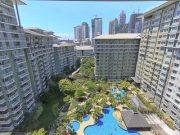Congratulations! Owning real estate in the Philippines is a monumental achievement, whether it is a small family home or a major commercial development. But with ownership comes a non-negotiable annual duty: fulfilling your Property Tax Obligations.

Ignoring this responsibility, even for a short time, exposes your investment to severe penalties and, eventually, the risk of public auction. This guide cuts through the confusion, clearly defining your obligations, showing you exactly how to calculate your tax, and outlining a strategy to ensure you remain fully compliant.
The primary recurring local tax you must pay is the Real Property Tax (RPT). It is mandated by law, specifically the Local Government Code of 1991 (RA 7160), and is crucial because it funds the essential local government services, infrastructure, and education in your city or municipality.
Understanding Real Property Tax (RPT)
The RPT is not just a fee; it’s an annual, mandatory levy.
Your Property Tax Obligations extend beyond just the land itself. RPT is imposed on all real property in your Local Government Unit (LGU) jurisdiction, including:
- Land: The lot area declared under your name.
- Buildings and Permanent Improvements: This includes your house, detached garages, walls, fences, and even swimming pools.
- Machinery: Equipment permanently fixed to industrial or commercial properties.
The Real Property Tax (RPT), commonly known as Amilyar, is the primary recurring local tax imposed on real estate, including land, buildings, improvements, and machinery. It is governed by the Local Government Code of 1991 (Republic Act No. 7160) and applies annually to all such properties. The purpose of RPT is to fund essential public services and infrastructure projects at the local level, such as roads, schools, and health centers. Compliance with RPT obligations is crucial not only for fulfilling legal requirements but also for long-term financial planning, avoiding unexpected expenses, and securing a clear title through a Tax Clearance Certificate.
Real Estate Taxes include several key types. The primary annual tax on property ownership is the Real Property Tax (RPT), which is a mandatory levy imposed on all real estate within a Local Government Unit (LGU).
In addition to RPT, there are taxes related to property transactions, including:
- Capital Gains Tax (CGT): A tax on the profit earned from the sale of property, typically at a rate of 6%.
- Documentary Stamp Tax (DST): Imposed on documents related to the sale or transfer of property, generally at 1.5%.
- Transfer Tax: A local government tax applied when ownership of property changes hands.
These transaction taxes are essential components of the overall tax obligations tied to real estate in the Philippines.
The Local Government’s Role and the Valuation Process
Local Government Units (LGUs) play a key role in managing property taxes. The Assessment Office is responsible for determining the fair market value of your property and creating a schedule of market values. Meanwhile, the Treasurer’s Office collects your real property tax payments and issues official receipts as proof. LGUs use the money collected from these taxes to fund important community services, including education through the Special Education Fund.
The Assessment Reform Act (RA 12001), also known as the Real Property Valuation and Assessment Reform Act (RPVARA), is a law that updates and standardizes the assessment of property values in the Philippines. It follows international rules to make the process fairer and clearer and to help local governments collect more revenue. Property owners should check their property records and talk to local officials to understand how this law affects their property tax payments.
Key Documents to Master
You must know these two documents intimately:
| Tax Declaration (TD) | Issued by the City or Municipal Assessor’s Office, the TD details the Fair Market Value (FMV) and classification of your property. This is the basis for your tax assessment. |
| Official Receipt (OR) | This is your definitive proof of payment. Keep digital and physical copies secure, as you will need them for future transactions like selling or mortgaging the property. |
How to Calculate Your Property Tax Obligations
Take the mystery out of your annual RPT bill by following this three-step calculation process.
A. Step-by-Step RPT Calculation
Step 1: Determine Fair Market Value (FMV): The value set by the LGU Assessor, based on the property type and the current SMV (Schedule of Market Values). This value can change every three years due to general revisions.
Step 2: Apply the Assessment Level: This is a percentage applied to the FMV based on the property’s classification (e.g., residential, commercial, or industrial).
| Assessed Value (AV) = FMV × Assessment Level |
Step 3: Apply the Tax Rates: The RPT is calculated by multiplying the property’s Assessed Value by the LGU’s total tax rate.
- Basic RPT Rate: Up to 1% (Provinces) or up to 2% (Cities/Metro Manila) of the Assessed Value.
- Mandatory Special Education Fund (SEF) Tax: An additional 1% of the Assessed Value is collected by all LGUs.
| RPT Due = (Basic RPT Rate + 1% SEF) × Assessed Value |
Other Special Levies: Property owners may be subject to additional levies, such as the Idle Land Tax (up to 5% of AV).
B. Payment Schedules and Strategies
The full payment of the annual Real Property Tax (RPT) is due on or before January 31st each year. However, property owners have the option to pay in four quarterly installments, with deadlines on March 31, June 30, September 30, and December 31. Payments can be made conveniently at the Local Treasurer’s Office, Municipal or City Hall, as well as through authorized banks and online portals. Paying early or in advance may also entitle property owners to discounts of up to 20%, depending on the local ordinance.
It is essential to keep all necessary documentation, including official receipts and the Tax Declaration (TD), to ensure compliance and serve as proof of payment. Maintaining these documents helps avoid penalties and facilitates future transactions involving the property. Staying organized with payment schedules and documentation is a crucial strategy for efficiently meeting your property tax obligations and avoiding unnecessary complications.
| Aspect | Details |
|---|---|
| Annual Deadline | Full payment of the annual Real Property Tax (RPT) is due on or before January 31st. |
| Installment Option | Payments may be made in four quarterly installments: Q1 (March 31), Q2 (June 30), Q3 (September 30), and Q4 (December 31). |
| Payment Locations | Payments are accepted at the Local Treasurer’s Office, Municipal/City Hall, authorized banks, and online portals. |
| Discounts | Early or advance payment may qualify for discounts up to 20%, depending on local ordinances. |
| Documentation | Keep official receipts and Tax Declaration (TD) documents to ensure compliance and proof. |
Consequences, Exemptions, and Relief Programs
A. Penalties for Non-Compliance (Tax Delinquency)
If you pay your real property tax late, an interest penalty of up to 2% per month will be charged on the unpaid amount. This penalty can accumulate but will not go beyond 72%, which equals 36 months of delinquency.
If you continue not to pay, the local government unit (LGU) can take administrative action. They may issue a Warrant of Levy, which is an annotation on your property’s title, and may also seize your personal property.
The most serious consequence of not paying your taxes is that your delinquent property can be sold at a public auction. This means you could lose ownership of your property if the taxes remain unpaid for a long time.
| Penalty Type | Description |
|---|---|
| Interest Penalties | Late payment incurs an interest penalty of up to 2% per month on the unpaid amount. |
| Maximum Penalty | Penalties will not exceed 72%, equivalent to 36 months of delinquency. |
| Administrative Actions | Persistent non-payment may lead to the issuance of a Warrant of Levy (annotation on the title) and seizure of personal property. |
| Ultimate Consequence | Delinquent real properties can be sold at a public auction after prolonged non-payment, resulting in loss of property ownership. |
B. Tax Exemptions and Relief Programs
While some tax exemptions for Real Property Tax exist, they rarely apply to standard residential properties like condos; therefore, property owners should always consult with local authorities to determine their specific eligibility. However, owners with past due taxes should be aware of tax amnesty programs that local governments may offer, such as the temporary relief provided under the Real Property Valuation and Assessment Reform Act (RA 12001), which waives or reduces interest and penalties on obligations incurred before July 5, 2024.
Managing Your Property Tax Obligations
Effective management of Real Property Tax (RPT) obligations is crucial for minimizing financial risk and protecting your investment in the Philippines. By staying informed about deadlines, understanding the calculation process, and regularly reviewing compliance with laws like RA 7160 and new regulations like RPVARA, you ensure a clear title and avoid costly penalties. Don’t navigate these complexities alone; consult with local authorities and tax professionals for expert advice. To continue delivering property solutions and staying informed on all aspects of property ownership, trust HousingInteractive, the Philippines’ first property portal.

























